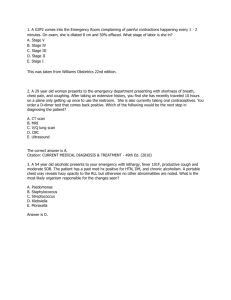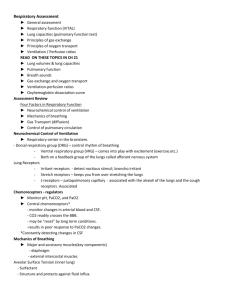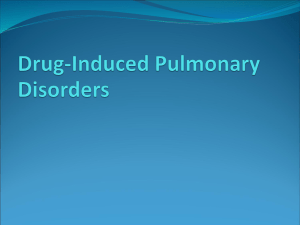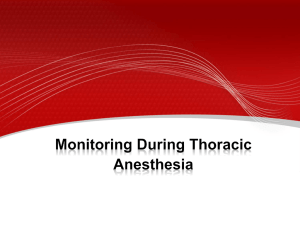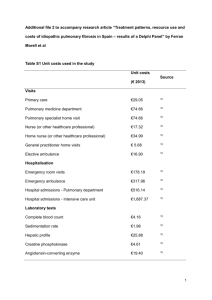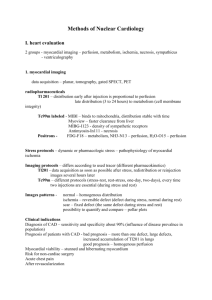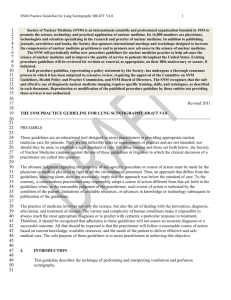Elhaj Abeer, Pytetska N. APPLICATION OF SCINTIGRAPHY IN
advertisement
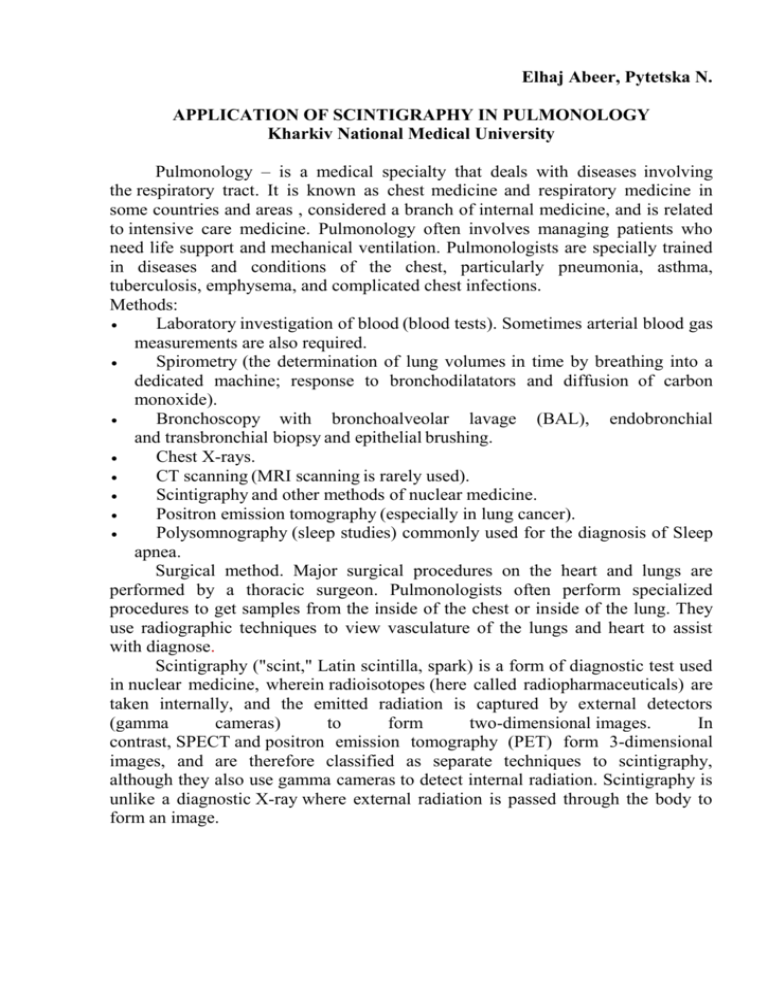
Elhaj Abeer, Pytetska N. APPLICATION OF SCINTIGRAPHY IN PULMONOLOGY Kharkiv National Medical University Pulmonology – is a medical specialty that deals with diseases involving the respiratory tract. It is known as chest medicine and respiratory medicine in some countries and areas , considered a branch of internal medicine, and is related to intensive care medicine. Pulmonology often involves managing patients who need life support and mechanical ventilation. Pulmonologists are specially trained in diseases and conditions of the chest, particularly pneumonia, asthma, tuberculosis, emphysema, and complicated chest infections. Methods: Laboratory investigation of blood (blood tests). Sometimes arterial blood gas measurements are also required. Spirometry (the determination of lung volumes in time by breathing into a dedicated machine; response to bronchodilatators and diffusion of carbon monoxide). Bronchoscopy with bronchoalveolar lavage (BAL), endobronchial and transbronchial biopsy and epithelial brushing. Chest X-rays. CT scanning (MRI scanning is rarely used). Scintigraphy and other methods of nuclear medicine. Positron emission tomography (especially in lung cancer). Polysomnography (sleep studies) commonly used for the diagnosis of Sleep apnea. Surgical method. Major surgical procedures on the heart and lungs are performed by a thoracic surgeon. Pulmonologists often perform specialized procedures to get samples from the inside of the chest or inside of the lung. They use radiographic techniques to view vasculature of the lungs and heart to assist with diagnose. Scintigraphy ("scint," Latin scintilla, spark) is a form of diagnostic test used in nuclear medicine, wherein radioisotopes (here called radiopharmaceuticals) are taken internally, and the emitted radiation is captured by external detectors (gamma cameras) to form two-dimensional images. In contrast, SPECT and positron emission tomography (PET) form 3-dimensional images, and are therefore classified as separate techniques to scintigraphy, although they also use gamma cameras to detect internal radiation. Scintigraphy is unlike a diagnostic X-ray where external radiation is passed through the body to form an image. Lung scintigraphy. The most common indication for lung scintigraphy is to diagnose pulmonary embolism, e.g. with a ventilation/perfusion scan. Less common indications include evaluation of lung transplantation, preoperative evaluation, evaluation of right-to-left shunts. In the ventilation phase of a ventilation/perfusion scan, a gaseous radionuclide xenon or technetium DTPA in an aerosol form is inhaled by the patient through a mouthpiece or mask that covers the nose and mouth. The perfusion phase of the test involves the intravenous injection of radioactive technetium macro aggregated albumin (Tc99m-MAA). A gamma camera acquires the images for both phases of the study. Indications and contraindications. Clinical indications for pulmonary scintigraphy include, but are not limited to, the following: 1. Assessment of the probability of acute or chronic pulmonary thromboembolic disease, including the evaluation of unexplained pulmonary arterial hypertension. 2. Quantification of differential or regional pulmonary function (eg, in predicting postoperative function). 3. Evaluation of transplanted lungs. 4. Evaluation of pulmonary or cardiac right-to-left shunts. 5. Evaluation of the effects of structural abnormalities of the chest, such as pectus excavatum and congenital diaphragmatic hernia. 6. Confirmation of the presence of bronchopleural fistulae. 7. Evaluation of chronic pulmonary parenchymal disorders such as cystic fibrosis. Relative contraindications. There are no absolute contraindications for pulmonary scintigraphy. Potential benefits must outweigh the minor risks of the procedure. There might be radiation risks to the fetus. When possible, the administered activity of each radiopharmaceutical should be decreased. One of the complication of this method can be aspiration of different substances into the airway, which can lead to other different diseases.

